Plants have a natural way of creating a calm atmosphere with their lush foliage and beauty, but there are other surprising benefits. While sitting pretty, these plants are busy cleaning the indoor air, and some houseplants are better at it than others. Placing indoor plants for clean air in different rooms of your home gives the space a natural breath of fresh air.
It’s easy to think that plants are greedy and need constant attention through feeding and watering, but there is more with than meets the eye.
Little did you know that they are more than just a piece of home decor and are busy returning your hard work with many unseen benefits. Many of us know that plants breathe in carbon dioxide and breathe out oxygen.
They also photosynthesize to make food by using sunlight to convert water into carbohydrates. Still, they play another vital role in the home. Many indoor plants are efficient at cleaning the air by removing pollutants.

- Growing Air-Purifying Plants for Your Home
- Why Do I Need Plants to Clean the Air in My Home?
- How do Indoor Plants for Air Purification Work?
- Are Some Plants Better at Air Cleaning than Others?
- Where Should I Place Clean Air Plants in My Home?
- Bamboo Palm (Dypsis lutescens)
- Snake Plant (Dracaena trifasciata) – Indoor Plants that Convert Carbon Dioxide at Night
- Philodendron (Philodendron bipinnatifidum)
- Boston Fern (Nephrolepis exaltata) – Best Indoor Plants for Clean Air
- Golden Pothos (Epipremnum aureum)
- Chinese Evergreen (Aglaonema) – Luck-Bringing Ornamental Plant for Removing Air Toxins
- Spider Plant (Chlorophytum comosum)
- Peace Lily (Spathiphyllum) – Flowering Indoor Plants for Air Purification
- English Ivy (Hedera helix)
- Weeping Fig (Ficus benjamina) – Tree-Sized Houseplant with Air-Freshening Qualities
- Aloe Vera (Aloe barbadensis miller)
- Rubber Plant (Ficus elastica) – Easy-Care Plant that Improves Air-Quality
- Corn Plant (Dracaena fragrans)
- Parlor Palm (Chamaedorea Elegans) – Attractive Palm-Like Houseplant for Clean Air
Growing Air-Purifying Plants for Your Home
One of the best ways to clean the air in your home is by adding some greenery. Some plants are better at detoxifying the home than others and are the perfect choice for growing indoors.
These indoor plants for air purification are happy to clean the air you breathe, they are easy to grow, and add beautiful greenery to your home decor.
Why Do I Need Plants to Clean the Air in My Home?
Of course, if you have noticeable odors in the house, a DIY room spray without essential oils (or with them) can be helpful.
However, many pollutants in the home are invisible, such as carbon monoxide, trichloroethylene, toluene, xylene, and volatile organic compounds (VOCs). These are the result of consumer products, building materials, vapors, and gases.
A NASA-led study recommends using various plants to reduce some of these toxins from the air and improve the home’s air quality.
How do Indoor Plants for Air Purification Work?
Plants are natural air purifiers that help reduce indoor air pollution while converting carbon dioxide into oxygen.
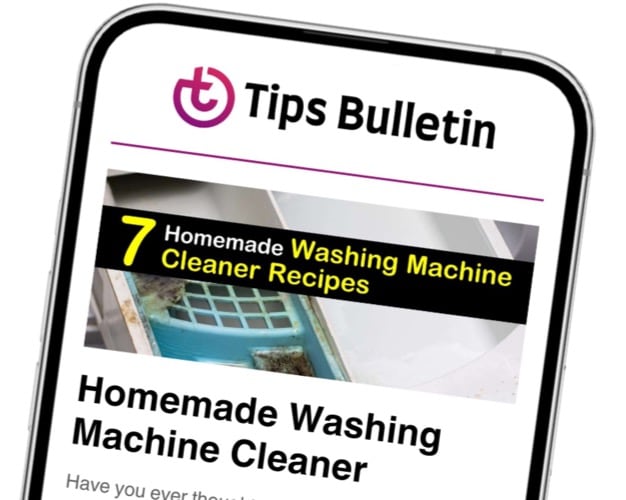
These are plants that remove toxins and bioeffluents floating in the air through tiny leaf pores, which are then moved down to their roots and into the dirt. Tiny microorganisms in the soil neutralize and break down the VOCs and convert them into plant food.
Are Some Plants Better at Air Cleaning than Others?
All plants have benefits, but some plants are better at removing toxins from the air than others. Not only that, but the best plants for air purification thrive while growing indoors, and are easy to maintain. Some of these plants include peace lily, English ivy, bamboo palm, and Chinese evergreen.
Where Should I Place Clean Air Plants in My Home?
Every room in your home is a great place to grow air-purifying houseplants, but some rooms are easy to overlook. The bedroom is where you spend approximately eight hours each day.
Therefore, this room is an ideal place for growing plants for fresh air while you sleep. Consider placing your plants in the home areas where you spend most of your time, with one plant per every 100-square feet of space.
Read the plant care tag for light requirements and set your plants in the appropriate area. Grow a sun-loving hanging plant in front of a sunny window, or place a low-light plant three to ten feet away from direct light.
Bamboo Palm (Dypsis lutescens)

This palm has tall and slender trunks and green pinnate leaves that form a lovely shape resembling bamboo. It is an easy-care plant with a tropical feel that looks stunning in any room of the home.
Bamboo palm sweeps away toxins like carbon monoxide. It is also a spider mite repellent plant and emits moisture during the winter months. This low maintenance plant requires part sun and grows 3 to 8 feet tall as a houseplant.
Snake Plant (Dracaena trifasciata) – Indoor Plants that Convert Carbon Dioxide at Night

The snake plant is a resilient succulent that we commonly refer to as mother-in-law’s tongue. It has a slender profile with tall strappy green leaves with silver-gray horizontal streaks and gold-colored edges.
This plant absorbs and removes toxic air pollutants such as xylene and has the unique nighttime ability to convert carbon dioxide into oxygen. Snake plants have a mature size of 1 to 8 feet tall and prefer low light conditions.
Philodendron (Philodendron bipinnatifidum)
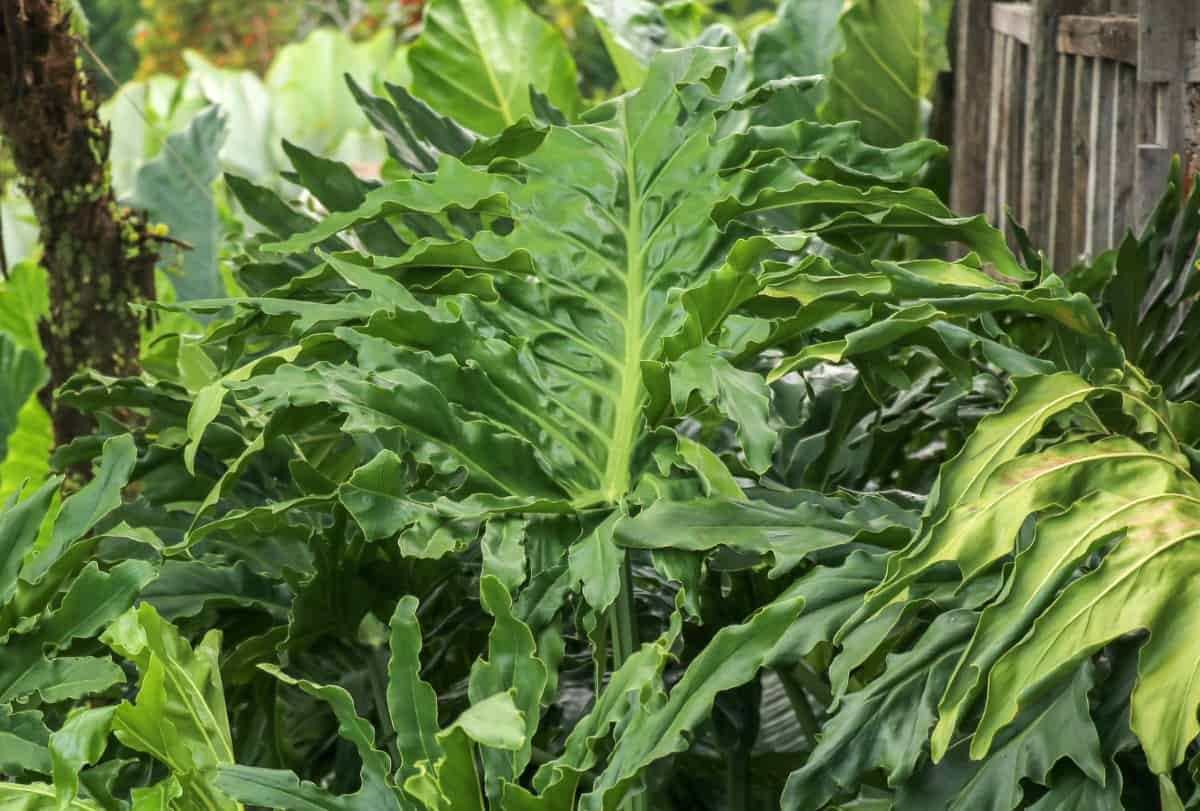
Philodendrons come in both climbing and upright growing varieties. They have glossy blue-green leaves that are heart-shaped. The climbing types are easy to train around a window, while the large-leaved type makes a great floor plant.
These low maintenance plants are ideal for removing formaldehyde and other household toxins. Climbing philodendrons need indirect light, while upright styles accept brighter light. Philodendrons grow from 1 to 8 feet tall and wide, depending on the variety.
Boston Fern (Nephrolepis exaltata) – Best Indoor Plants for Clean Air

Boston ferns are an elegant and majestic plant with a lush mass of green sword-shaped fronds and an arching form. They are the perfect choice for a hanging basket or pedestal sitting in your home’s low light area.
This plant is one of the best for removing household pollution while restoring moisture to the home. Boston ferns are low maintenance houseplants that have a mature size of 1 to 3 feet tall and wide.
Golden Pothos (Epipremnum aureum)

Golden pothos is a plant that seems impossible to kill. It grows in a trailing vine of heart-shaped leaves in green shades, sometimes variegated with yellow or white. Hang a pothos plant in the bedroom, bathroom, or any home area for cascading foliage.
Often called devil’s ivy, this plant removes many types of household toxins and thrives in almost any growing condition. It handles both bright and low light areas and trails up to 10 feet in length.
Chinese Evergreen (Aglaonema) – Luck-Bringing Ornamental Plant for Removing Air Toxins
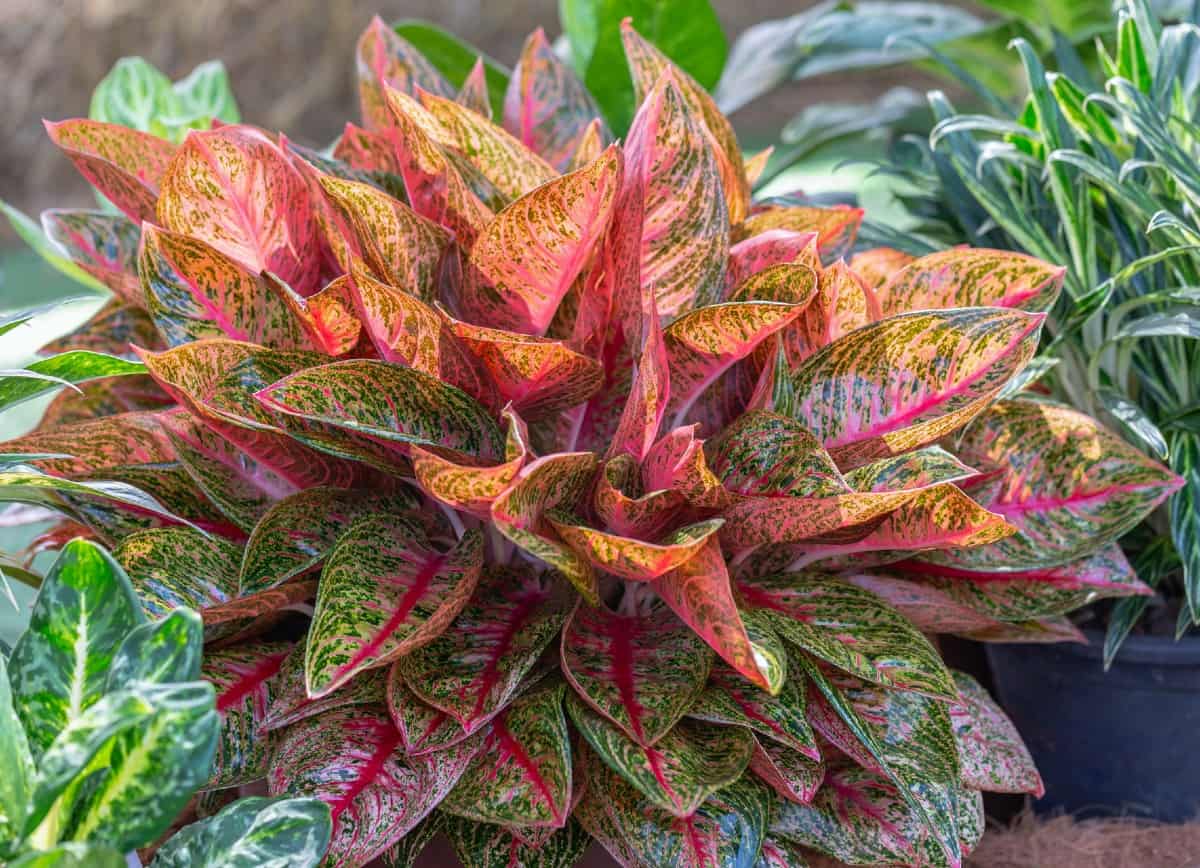
Chinese evergreens are a foliage plant that produces leaves in color variations, from deep green to silver, with possible hints of red. The oval leaves are large and narrow and grow on short stems, giving it a full foliage appearance.
This ornamental plant removes toxins such as benzene and formaldehyde from the air. Direct sunlight is a no-no as it grows best in indirect light. Chinese evergreen plants grow 10 to 48 inches and need well-drained potting soil to thrive.
Spider Plant (Chlorophytum comosum)

Spider plants are a popular houseplant that is the go-to for many indoor gardeners and are good plants for bedroom areas. These easy-growing plants have long, solid green or green and white variegated leaves that form an arching shape and grow well on a plant stand or in a hanging basket.
These plants remove nearly all formaldehyde from indoor air while filtering out other harmful toxins. Spider plants are incredibly hardy and tolerate most living situations. They love bright light but handle some shade and grow up to 12 inches tall and 24 inches wide.
Peace Lily (Spathiphyllum) – Flowering Indoor Plants for Air Purification

Peace lilies have a striking appearance that makes them the perfect plant for a centerpiece. They have glossy, oval-shaped leaves with vibrant green color and produce white or light green flower stalks that rise above the foliage during spring.
This tropical plant breaks down toxic gases in the air better than many other plants. Peace lilies have a mature height of 3 feet tall and love medium, indirect light. The air cleaning qualities of this plant make it an excellent choice for frequented rooms in the home.
English Ivy (Hedera helix)
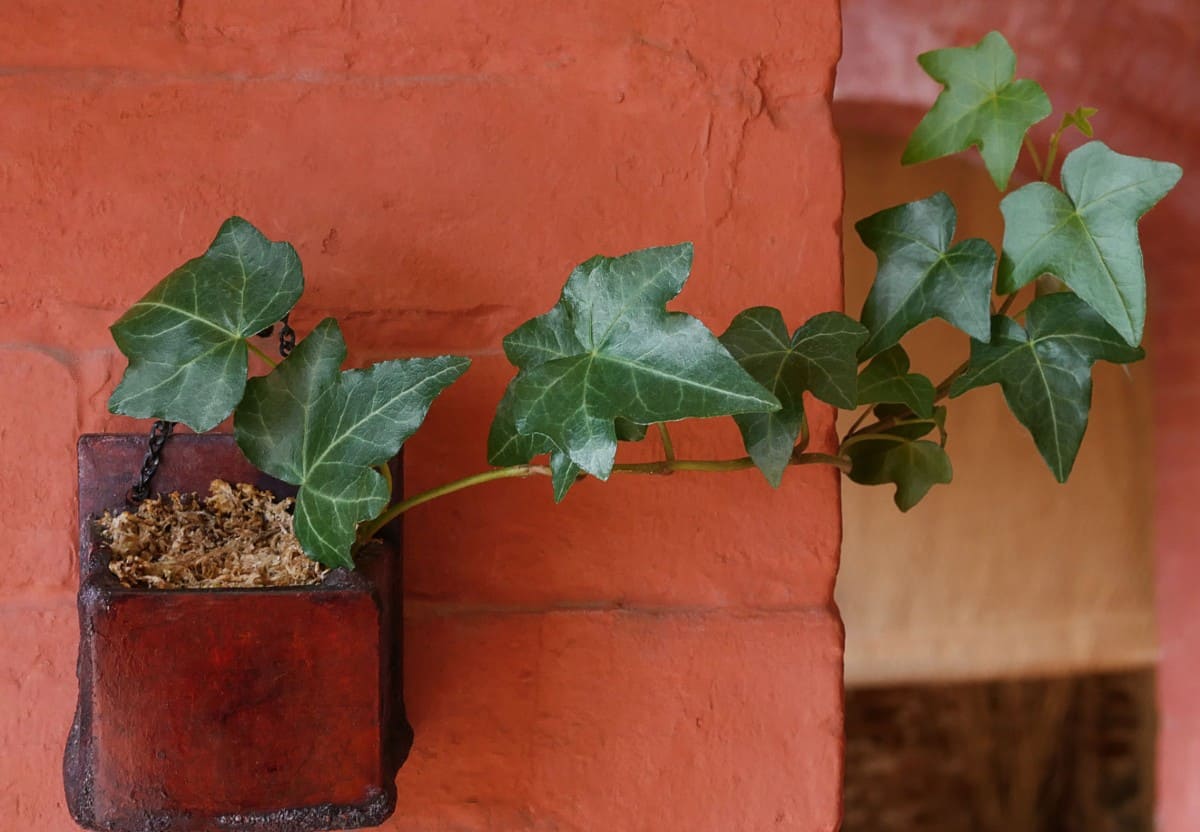
This ivy plant is a vigorous vine that is very easy to grow. It is popular for hanging baskets and fills the space with trailing stems filled with various shaped green leaves marked with silver or white.
English ivy effectively removes toluene and xylene from the air, while reducing mold in the home. Climbing easily to a length of 5 feet, it thrives in part to full sun. This plant is highly tolerant and requires very little care to flourish.
Weeping Fig (Ficus benjamina) – Tree-Sized Houseplant with Air-Freshening Qualities
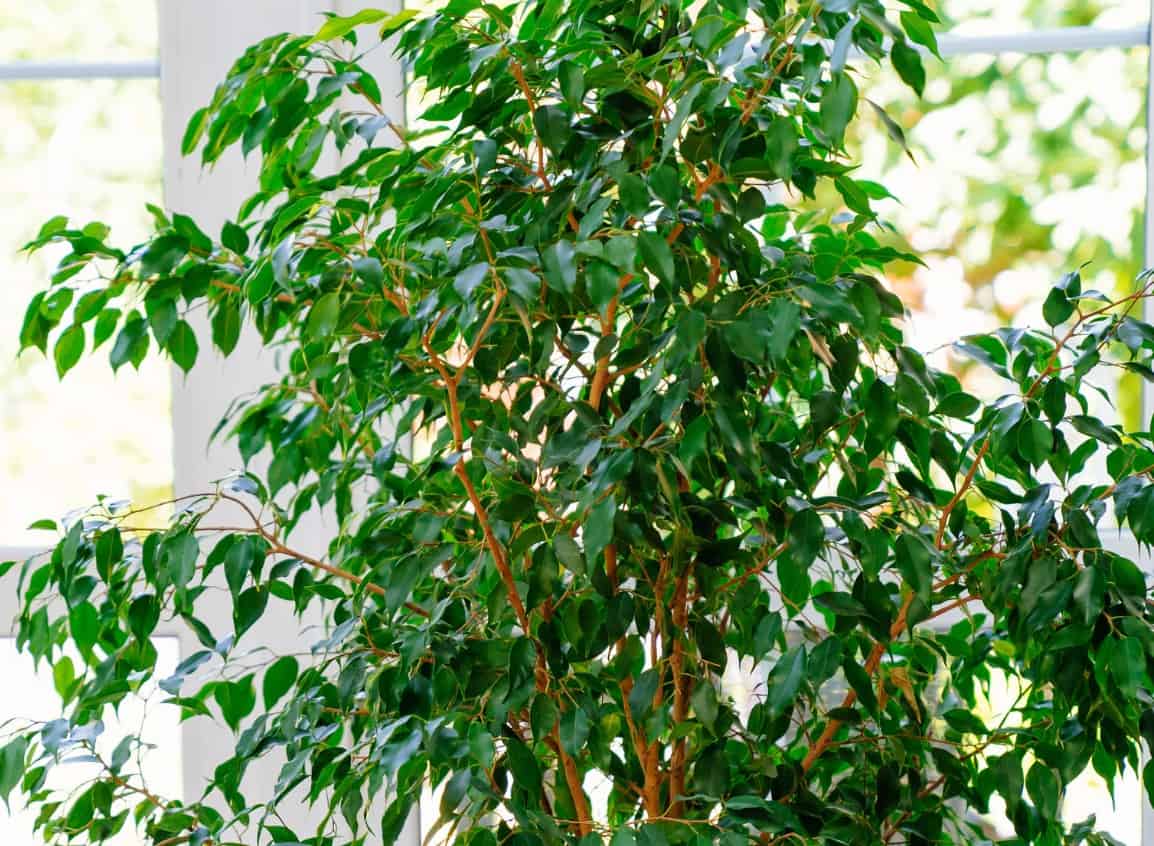
The weeping fig tree, otherwise called a ficus tree, is a popular choice for homes with large empty spaces. It is a large, broadleaf evergreen that is common in tropical climates, with gracefully arched, slender branches and glossy dark green leaves.
This tree-sized plant works efficiently at cleaning airborne chemicals in the home. Weeping figs grow in the 3 to 6-foot range, depending on the pot’s size, and are tolerant of low light areas.
Aloe Vera (Aloe barbadensis miller)
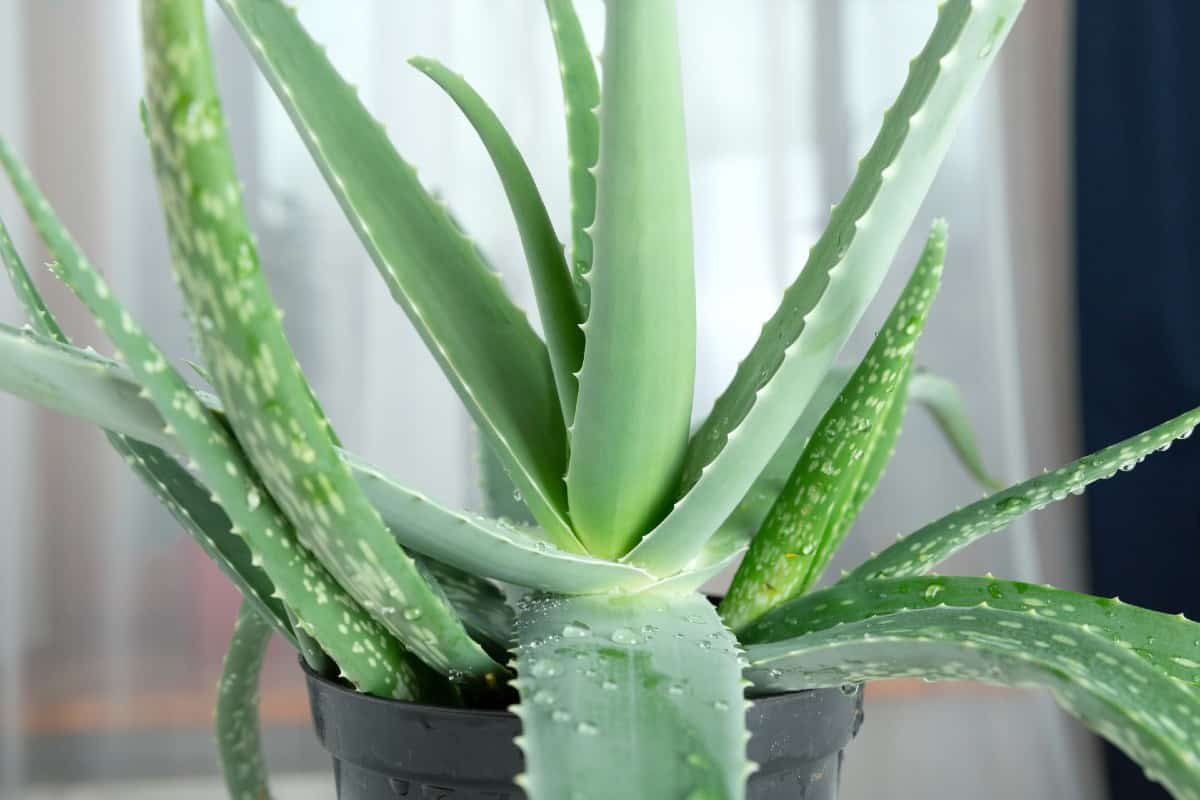
Aloe vera is a succulent that produces thick leaves from the plant’s base in the shape of a rosette. The leaves have jagged, tooth-shaped edges and contain a skin healing watery gel.
This plant filters many toxins out of the home, and unlike most other plants, aloe vera emits oxygen during the night hours. Potted aloe vera plants have an average size of 1 to 2 feet tall and love sitting in front of a sunny window.
Rubber Plant (Ficus elastica) – Easy-Care Plant that Improves Air-Quality
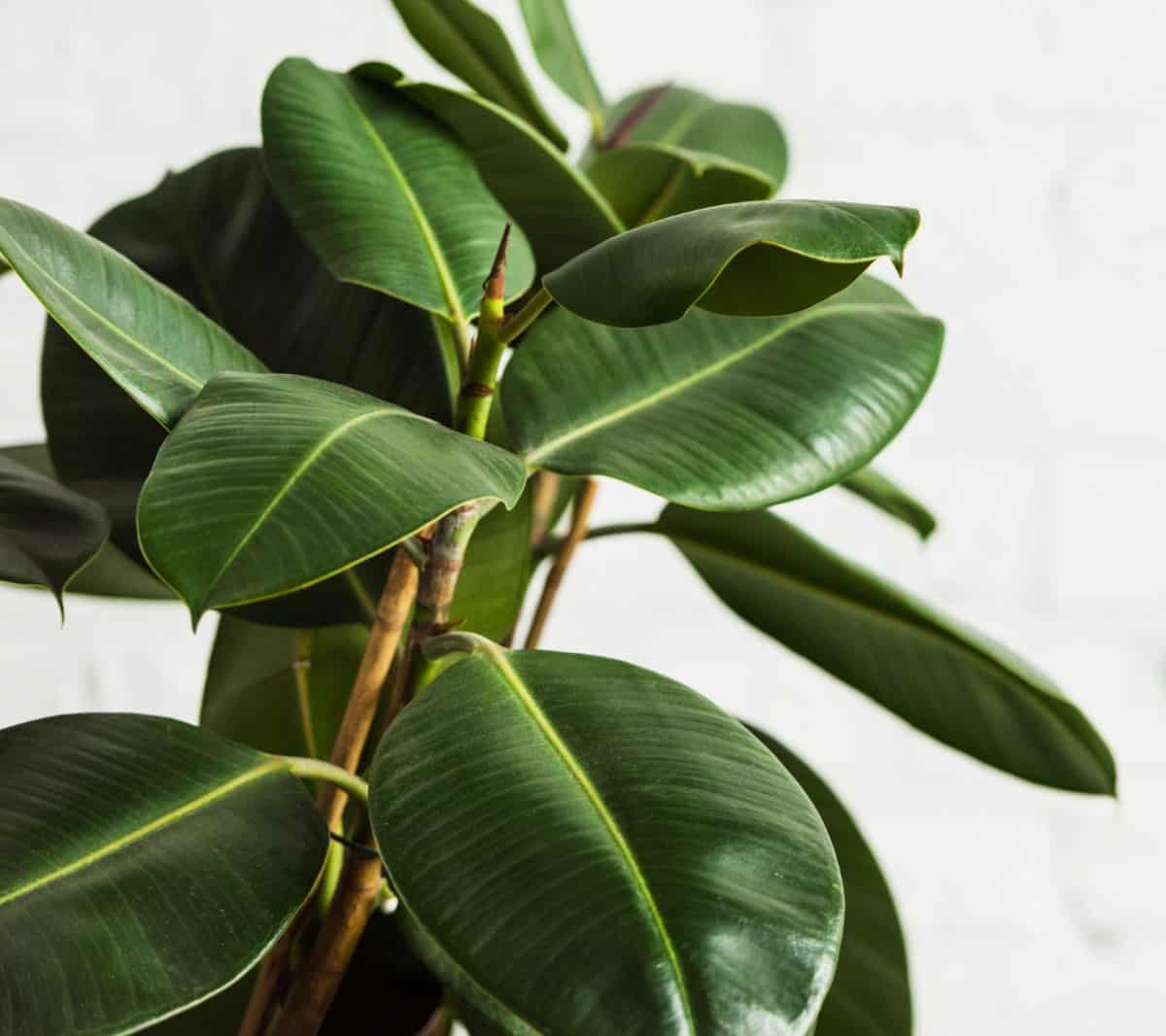
The rubber plant’s huge, soft leaves are oval-shaped and form a gentle canopy that is familiar in tropical forests. The most common type has glossy green leaves with a bronze cast on the underside.
This plant is easy to care for and improves air quality by absorbing airborne chemicals and breaking them down. They also eliminate mold spores and bacteria in the air. Rubber plants thrive in bright light and have a mature height of 6 to 10 feet tall when grown in the home.
Corn Plant (Dracaena fragrans)
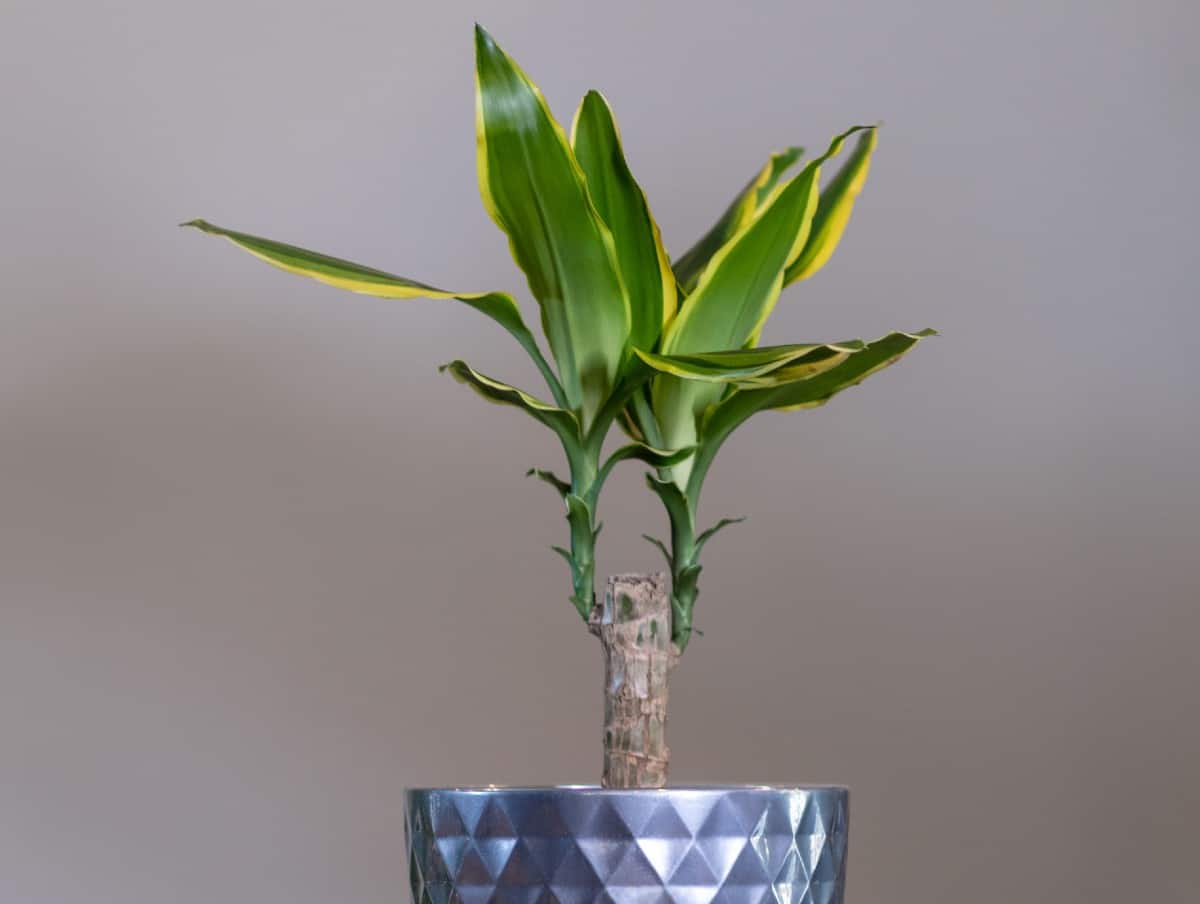
Corn plants grow one or more thick canes with long and narrow leaves at the top. It is similar in appearance to palm trees, has bright green leaves, and withstands everyday abuse from a busy household.
This plant enjoys semi-shade, but tolerates brighter light, and effectively removes formaldehyde from indoor air. Corn plants grow 4 to 6 feet tall in a pot and grow best in rich, well-drained soil.
Parlor Palm (Chamaedorea Elegans) – Attractive Palm-Like Houseplant for Clean Air

The parlor palm is a popular plant that grows in attractive clumps. It has thin trunks and light textured foliage, giving it a gentle, tropical appearance. It is an adaptable plant that handles low temperatures and light.
This plant has a high air purifying score and clears out trichloroethylene and other household gasses. Parlor palms love bright, indirect light and grow 2 to 6 feet tall and 2 to 3 feet wide as a houseplant.
Houseplants that clean the air are an ideal way to bring nature indoors and create a peaceful, stress-free environment, but they are also busy playing a role in the background that is not only beneficial to them but your home.
While they sit in their corner or windowsill, these plants clean the indoor air, ensuring that your home is free from harmful pollutants.
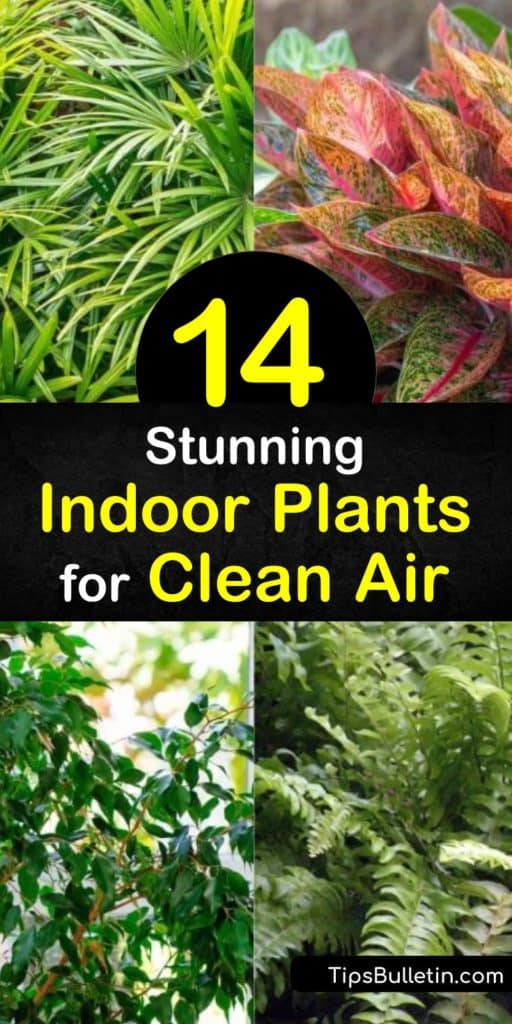
One of the best ways to keep your indoor air clean and fresh is to grow indoor plants for clean air, so why not share our air purifying plant guide with your family and friends on Facebook and Pinterest to improve the air quality in their homes, too?